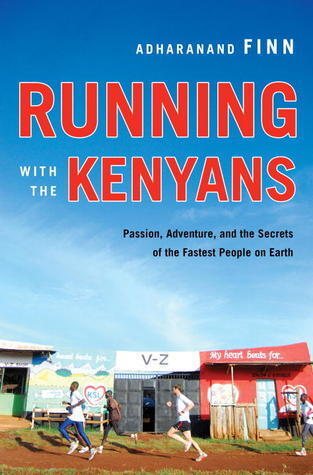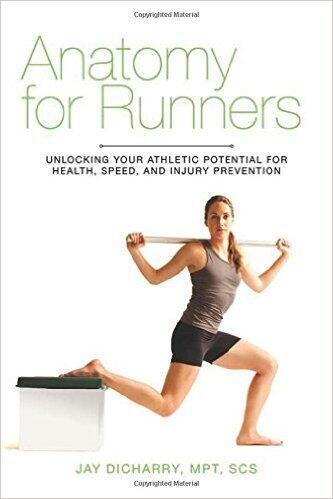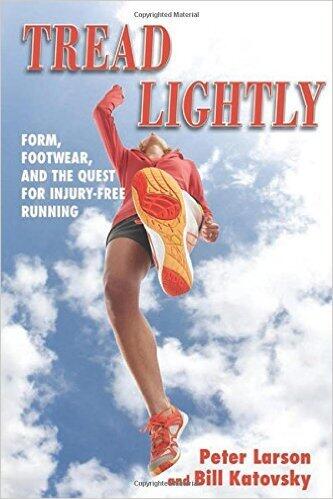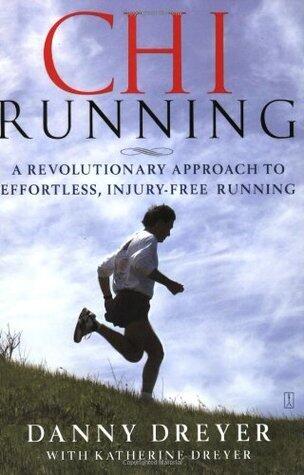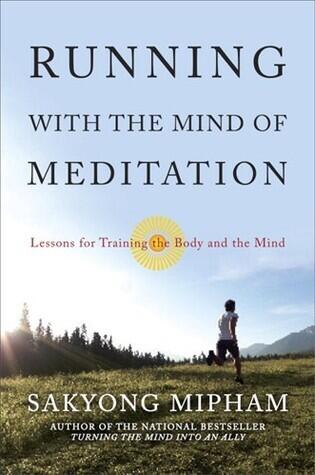
“People sometimes sneer at those who run every day, claiming they’ll go to any length to live longer. But don’t think that’s the reason most people run. Most runners run not because they want to live longer, but because they want to live life to the fullest. If you’re going to while away the years, it’s far better to live them with clear goals and fully alive then in a fog, and I believe running helps you to do that. Exerting yourself to the fullest within your individual limits: that’s the essence of running, and a metaphor for life—and for me, for writing as whole. I believe many runners would agree.” (- Haruki Murakami, “What I Talk About When I Talk About Running”)
2016 was my first year of running. I started out of shape, aiming to complete a 5k, and I finished my first full year (2016) by running my first half-marathon distance and by reading a memoir on running, life and writing by Japanese novelist Murakami entitled, “What I Talk About When I Talk About Running.”
Like most new challenges and skills I pursue, I approached this year of running through reading and study. Besides running, it was also a year for reading about running. While you mostly learn to run by running, visualization and following good examples are key aspects to accelerating how fast you learn and improve.
We might be “born to run,” but there are many aspects of running and performance improvements that can be gain by reading about running from elite athletes, scientists, new and old runners and coaches. Quite simply, I also learned to run by reading some of the best books on running by runners.
Running is not just about fitness, I’ve come to learn. Like Murakami’s quote at the beginning, running is about pursuing and exerting yourself to the fullest. Life is to be lived.
In this post, I’m going to categorize, summarize and share my favorite quote and takeaways from some great books I’ve read on running. Hopefully this will give new and old runners alike some books to add to their reading list.
Categories for Books on Running
I read a total of 9 books on running as well as dozens of articles on running this past year. I also read “Peak” by psychologist K. Anders Ericsson, which looks at “deliberate practice” as a key part of becoming an expert or champion in various fields. I found his book quite influential to my thinking about training and pursuit of excellence. I highly recommend the book “Peak” as well as Freakonomics podcast on How to Be Great at Just About Anything.
There are a lot of books (and articles and apps) out there about running. Some amazingly smart and deep people run and, through their observations and scientific studies, I was able to modify how I approach running and even approach my life.
Running isn’t really just about fitness, though that is an important aspect, especially in the beginning. Running is about a deeper respect for your self and for nature–your own and the outside world’s.
From my reading, I find that books on running can be divided in the following categories (though admittedly many of these books could fall into multiple categories):
- “Getting Started” Books for Beginner Runners,
- Running Training Plans & Methods (from 5k and 10k to Marathons and Ultras),
- Running Science, Techniques and Principles,
- History of Running and Runners,
- Body & Biomechanics of the Runner,
- Memoirs on Running.
Let’s get started.
Running with the Kenyans: Passion, Adventure, and the Secrets of the Fastest People on Earth by Adharanand Finn
Mark’s Rating: 3 (out of 5). Published: 2012. Category: Memoirs on Running.
Summary: Author Adharanand Finn moves to Kenya and starts following and training with the local Kenyan runners. He learns about their techniques, history and characters behind some of the world’s most elite long-distance runners. This book is an experiential memoir as the author pursues improving his running. It is also in some ways a followup on the study and book “Born to Run,” a well-known classic on running, which supposes that the human body is innately a runner’s body.
Takeaway: This was my first book on running. Starting with a memoir was a good way to ease into thinking more about running. It’s well-written and enjoyable, though it feels a bit colonial and shallow at times. All the same there are some really nice portraits in the narrative: “A dusty road stretches into the distance like a pencil line across the arid landscape. Lions, rhino, and buffalo roam the plains on either side. But I haven’t come to Kenya to spot wildlife. I’ve come to run.” Overall, the narrative also surfaced tons of threads for me to consider like running technique, diet, daily needs, dedication, culture of professional running, etc.
Fav Quote: “Running is a brutal and emotional sport. It’s also a simple, primal sport. As humans, on a most basic level, we get hungry, we sleep, we yearn for love, we run.”
Find “Running with the Kenyans” on Amazon.com.
Anatomy for Runners by Jay Dicqarry
Mark’s Rating: 4 (out of 5). Published: 2012. Category: Body & Biomechanics of the Runner.
Summary: How does running influence the body? This book dives into the biomechanics of running in order to examine things like stretching, best way to run, what causes injuries, which shoes, and barefoot running. Ultimately it says that most beginner runs have weak mobility and poor stability. This leads to injuries and problems. Through a step-by-step assessment and exercises, the author provides a formula to improve your mobility and subsequently improve your performance (and decrease injury)
Takeaway: I’ll admit that mobility was a big challenge for me when I started running. I wasn’t flexible nor strong in key areas and I got injuries. Following training techniques from this book led to huge improvements for me and for the remainder of the year I’ve been injury-free (though not without some aches and soreness).
Fav Quote: “If you really are seeking to improve your performance and send running injuries walking the other direction, your body needs to be able to run as a mobile, strong, and stable spring. To do this, you need to have certain physical attributes that are nonnegotiable (yes, you’ve seen this before, and yes, it’s that important): 1. Enough mobility to get the leg behind you in stance. 2. Stability of the core, hips, and foot to maintain posture and optimize transfer of energy. 3. Strength and power from the glute to drive the body up and forward.”
Find “Anatomy for Runners” on Amazon.com.
Ready to Run: Unlocking Your Potential to Run Naturally by Kelly Starrett,
Mark’s Rating: 4 (out of 5). Published: 2014. Category: Body & Biomechanics of the Runner
Summary: Kelly Starrett is well-known proponent of mobility exercises in the cross-fit community. His website MobilityWOD is filled with instructional videos on how to maintain your body at its fullest capacity through mobility training. In his book “Ready to Run,” Starrett writes, “Surveys and research suggest that approximately three out of four runners get at least one running-related injury per year.” His goal is to instill basic human mobility practices and “system checks” that prepare you to run and run injury-free. His 12 key points to being a good, mobile, strong runner are: 1) Neutral Feet, 2) Flat Shoes, 3) A Supple Thoracic Spine, 4) Efficient Squatting Technique, 5) Hip Flexion, 6) Hip Extension, 7) Ankle Range of Motion, 8) Warming Up/Cooling Down, 9) Compression Socks, 10) No Hotspots, 11) Hydration, and 12) Jumping/Landing. While the writing style is a bit weak compared to his videos and speaking, Starrett provides a very hands-on guide for runners and all humans to be more aware of your bodily mechanics and to take steps to improve your weak points.
*Takeaway: This book was extremely helpful when I came off my first injury of the year. It made me aware that injuries weren’t an inevitable part of running. We shouldn’t run through pain but instead take them as your body calling out for attention. By effectively becoming aware of your body as a system of systems, you can pinpoint your weak points and get stronger. Personally I tried and implemented nearly all of his recommendations and feel my body and running are much improved from it.
Fav Quote: “The real game-changer is the attitude you and I adopt in our lives as runners: the conviction that we are responsible for taking care of our running machines like a master mechanic would.”
Find “Ready to Run” on Amazon.com.
Runner’s World Run Less, Run Faster by Bill Pierce, Scott Murr, Ray Moss
Mark’s Rating: 3 (out of 5). Published: 2007. Category: Running Training Plans & Methods (from 5k and 10k to Marathons and Ultras)
Summary: “Runner’s World Run Less, Run Faster: Become a Faster, Stronger Runner with the Revolutionary FIRST Training Program” is a training guide for long-distance runners. Written by running coaches, the book provides a technical and detailed plan for preparing for marathons. It’s main premise is that training that only focuses on running can lead to injury, so instead, their plan calls for a mix of running and cross-training. Specifically, “Three quality runs each week plus two cross-training workouts are the foundation” of the methodology. For the running component, runs are hard but precise and goal-driven. For the cross-training via cycling or swimming, you are building up your endurance while avoiding overuse injuries from always running.
Takeaway: This was my first look into training plans, and it gave me a lot of good tips on how to arrange a plan towards a distance and speed goal. I think mixing up cross-training can be quite helpful, especially as distance and time spent running increases. As I started to add more and more distance to my training I worried about re-injury to my knee or ankle, so I added a couple cycling sessions per week to decrease my load. There is a lot of disagreement about the effectiveness of this and other long-distance training plan. That said, my main takeaway was that run training needs to be precise and that your training runs need to be specific to your goals. You don’t just run; you train.
Fav Quote: “Marathons provide us with an opportunity to challenge ourselves with a difficult goal that requires a dedication of time and effort spanning months. We must remember to enjoy the journey. The marathon itself lasts only a few hours, but the anticipation is spread over several months. The enjoyment that I get from having a focus for 4 months leads me to submit a marathon entry year after year.”
Find “Run Less, Run Faster” on Amazon.com.
Tread Lightly by Peter Larson, Bill Katovsky
Mark’s Rating: 5 (out of 5). Published: 2012. Category: Body & Biomechanics of the Runner
Summary: If we as humans evolved over thousands of years to be the most effective long-distance running species on the planet, why are running injuries so common? What’s the cause? Is it our shoes, our running form, overtraining, or poor nutrition? In this detailed, highly documented yet honest book, writers Peter Larson and Bill Katovsky explore the history of “running man” and scientific research on running injuries. They note that the majority of injuries fall amongst new runners or those just starting out as well as from previous injury, lack of running experience, running to compete, and excessive weekly running distance.” They look at an array of topics including barefoot running, running shoes, pronation, foot strikes, and running stride among others to lay out the current research while also recognizing there are areas we don’t yet know. The book is highly readable with tons of small facts, compiled research, and useful observations for the runner-scientist, runner-historian or even simply runner-human.
Takeaway: As a data and science nerd, this was one of my favorite books about running. It’s no bullshit approach to examining controversial topics like shoes and foot strike leave you with enough knowledge to decide on your own. It reads well and you can easily go back to it on a topic-by-topic basis.
Fav Quote: “Runners (with or without shoes) who have strong feet have the ability to control this motion just fine. The foot works best when it receives sensory information on where it’s landing, and a firm surface is best for feedback. Overly soft shoes delay the feedback.”
Find “Tread Lightly” on Amazon.com.
ChiRunning: A Revolutionary Approach to Effortless, Injury-Free Running by Danny Dreyer, Katherine Dreyer
Mark’s Rating: 2 (out of 5). Published: 2004. Category: Running Techniques and Principles
Summary: Published in 2004, “ChiRunning” wants to help runners run injury free. The book leverages several Eastern traditions like yoga, Pilates, and T’ai Chi to found a methodology of effortless running. While couched as scientific, most of its evidence is anecdotal. It promotes natural efficiency of the midfoot strike and of a strong core.
Takeaway: This book contains quite a lot of gibberish at points and its language is rather inflated. I agree with the main point of running shouldn’t be so hard on the body and that we should run in a way that is smooth and effortless. We should run from our center and respect our body’s tendency to run effectively.
Fav Quote: “In ChiRunning, as in T’ai Chi, all movement in your body originates in your center. It is your power source, acting as the axis around which everything else moves.”
Find “ChiRunning” on Amazon.com.
My Year of Running Dangerously: A Dad, a Daughter, and a Ridiculous Plan by Tom Foreman
Mark’s Rating: 5 (out of 5). Published: 2016. Category: Memoirs on Running
Summary: This book was an extremely enjoyable read about one man’s journey to start running again. In the book, CNN correspondent Tom Forement documents how he started running more and going on epic runs from 22k to 55 miles. Not only is it well-writtten, the narrative flows well through a series of runs and life lessons as the author prepare to first complete a marathon and then an ultra-marathon. It also starts with a simple New Year’s challenge with his daughter, before morphing into the realization, “I knew that my first challenge would not be getting fit for running, but rather getting running to fit into my life.” Through multiple cities and events, he discover a passion to run with his dedication to fitting this passion into a busy work life.
Takeaway: In the end and his somewhat blundering way, the author completed: “Four half marathons, three full marathons, one 55-mile ultramarathon, and 2,000 miles of training all in one year. From a standstill.” The lesson of the book isn’t so much about the miles and accomplishments but the joy he discovers in taking himself one step farther. For me, it’s this mix of completing the training while enjoying the journey and the serene moments that makes running so wonderful.
Fav Quote: “This is the real reason I love running like an idiot against the miles, against the calendar, and against the odds. Running puts me in touch with the moment, and reminds me how each one is rare and precious. As we get older, it is easy to believe in failure, cynicism, bad intentions, and worse plans. It is hard to believe in honest effort, the kindness of strangers, and true challenges that can be honestly conquered. Running pushes all the bad aside and brings all the good my way.”
Find “My Year of Running Dangerously” on Amazon.com.
Running with the Mind of Meditation: Lessons for Training Body and Mind by Sakyong Mipham
Mark’s Rating: 3 (out of 5). Published: 2013. Category: Memoirs on Running
Summary: Buddhist monk Sakyong Mipham is both a teacher of meditation and a long-distance runner. In this book, he dives into the intersection of running and meditation, mind and body, stillness and movement. While the book takes on elements of a memoir, it’s mostly an exploration of training both our bodies in movement (running) and our minds (principally through meditation). As he says, the “book is therefore not a training manual, but a guide to integrating particular elements of meditation into the activity of running.” Specifically he wants to bring elements of the practiced mind with aspects of the runner’s body and find ways so that “Running can be a support for meditation, and meditation can be a support for running.”
Takeaway: I found this book to be struggle to complete. It felt unnecessarily abstract at points where the author felt the need to share so many elements from the buddhist traditions and writings. There are a few nice parallels at points between bringing more meaning and mindfulness to running but they are mixed between rather unrelated sections where he strives to bring training phases to align with various dignities and creatures like “tiger, lion, garuda, and dragon” as well as the “strong windhorse, lungta.” Perhaps a meditation or buddhist would get more value from this book.
Fav Quote: “One of the benefits of the outrageous runs is that we run without ambition. Since running is essentially a goal-driven sport, at this phase of running, we can relieve ourselves of that orientation. Part of what allows us to be goalless in this phase is an inherent trust in our fitness and our ability. We do not have to prove ourselves. At this level, it does not actually matter. We have achieved so many goals in the past that now the only goal is no goal. Mentally, the garuda phase means running without hope and fear, not running by constantly being driven. Running in this way helps us to be more present.”
Find “Running with the Mind of Meditation” on Amazon.com.
What I Talk About When I Talk About Running by Haruki Murakami
Mark’s Rating: 5 (out of 5). Published: 2009. Category: Memoirs on Running
Summary: In this memoir about running and training, Japanese novelist Haruki Murakami shares his struggles, learnings and life journey as a runner and novelist. Written during roughly a single year, the book shares his training and running in Japan, Hawaii and Boston as well as competitions around the world. The language and depth are wonderful, and I was never bored while reading this. Murakami’s memoir is less about running and more about having a life passion that keeps him health and striving after hard things (marathons, triathlons and challenging novels). It’s filled with great quotes like: “Pain is inevitable. Suffering is optional.”
Takeaway: My takeaway from reading this book is that running is about getting a little bit better than where you were before. And this lesson goes beyond running and spills into everything we do. The author says it even better: “For me, running is both exercise and a metaphor. Running day after day, piling up the races, bit by bit I raise the bar, and by clearing each level I elevate myself. At least that’s why I’ve put in the effort day after day: to raise my own level. I’m no great runner, by any means. I’m at an ordinary – or perhaps more like mediocre – level. But that’s not the point. The point is whether or not I improved over yesterday. In long-distance running the only opponent you have to beat is yourself, the way you used to be.”
Fav Quote: “I just run. I run in void. Or maybe I should put it the other way: I run in order to acquire a void.”
Find “What I Talk About When I Talk About Running” on Amazon.com.
Conclusion What’s Learned About Running Through Reading About Running
Running is one of the simplest of human endeavors. You get up, put on shoes (or not), head out the door and run. That’s it.
When it comes to training and learning to run, we are now flooded with options, apps, training methods, books and coaches with different ways to improve your running and training. Unfortunately many of these books taken an aggregate anecdotal approach to running, wherein an individual or small group attempts to explain how their method is the best. Personally, I feel these books would be better put in the memoir category, and if you are looking the best books on running and training, you should stick with unbiased scientist-runners.
Over the past year I’ve read nearly a dozen books on running. Not only has it provided me with a lot of things to think about, it has kept my mind on running, even when I’m not running. We can only spend a few hours per week actually running, so reading can be a good way to keep you thinking and learning too.
Each of us approach life uniquely. In the same way we also approach running in our own unique way. Books, coaches, apps and many other tools can help us figure out a holistic approach to running that works for us, especially when we are training, working through injuries or pushing towards our personal bests in performance, health and fitness.
On my reading list are several classics like “Born to Run,” “Once a Runner,” “The Loneliness of the Long Distance Runner” (1962), and “Being and Running” as well as science-driven books like “Science of Running.” I’m also looking forward to read more of the history of running and running gears like “The Perfect Mile,” “Bowerman and the Men of Oregon” and “Shoe Dog.” Mobility and strength improvements are also part of my broader training and learning too.
Hopefully this review of some great books on reading give you some new books to add to your reading list.
Happy reading and happy running!

